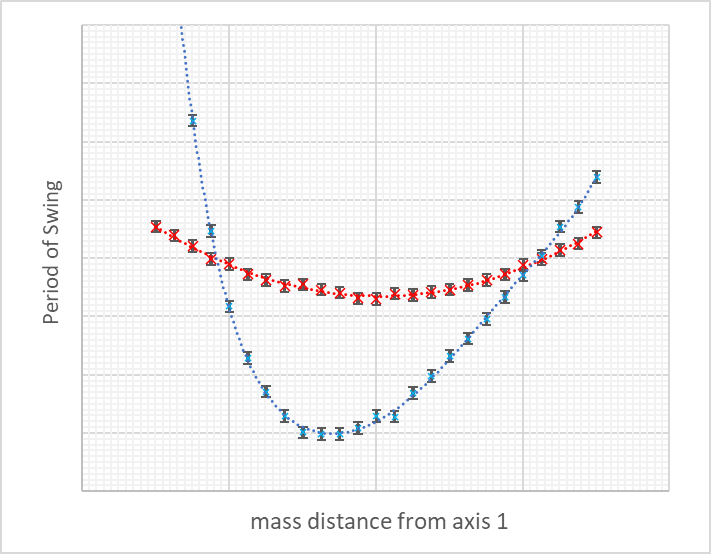AH - g by Kater Pendulum
The traditional gold standard for precisely measuring g at different locations was a Kater pendulum.
Our kit produces precise and accurate results (up to 0.2% uncertainty) and is optimised to be affordable and simple to operate independantly by pupils.
Pupils change the position of one mass and record the period in both orientations to produce a graph of period vs Mass position.
From there they simply read off the intercept of the two lines to find the period of a pendulum that has a length equal to the spacing between the two axles.
All Aluminium construction to prevent corrosion. Continuously variable mass positions.
Designed to sit between a pair of standard lab desks, an inexpensive folding workbench or a pari of filing cabinets would also work.
Available without a base for those that have already purchased a compound pendulum (same base used)
The traditional gold standard for precisely measuring g at different locations was a Kater pendulum.
Our kit produces precise and accurate results (up to 0.2% uncertainty) and is optimised to be affordable and simple to operate independantly by pupils.
Pupils change the position of one mass and record the period in both orientations to produce a graph of period vs Mass position.
From there they simply read off the intercept of the two lines to find the period of a pendulum that has a length equal to the spacing between the two axles.
All Aluminium construction to prevent corrosion. Continuously variable mass positions.
Designed to sit between a pair of standard lab desks, an inexpensive folding workbench or a pari of filing cabinets would also work.
Available without a base for those that have already purchased a compound pendulum (same base used)
The traditional gold standard for precisely measuring g at different locations was a Kater pendulum.
Our kit produces precise and accurate results (up to 0.2% uncertainty) and is optimised to be affordable and simple to operate independantly by pupils.
Pupils change the position of one mass and record the period in both orientations to produce a graph of period vs Mass position.
From there they simply read off the intercept of the two lines to find the period of a pendulum that has a length equal to the spacing between the two axles.
All Aluminium construction to prevent corrosion. Continuously variable mass positions.
Designed to sit between a pair of standard lab desks, an inexpensive folding workbench or a pari of filing cabinets would also work.
Available without a base for those that have already purchased a compound pendulum (same base used)



